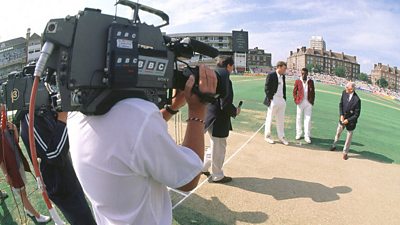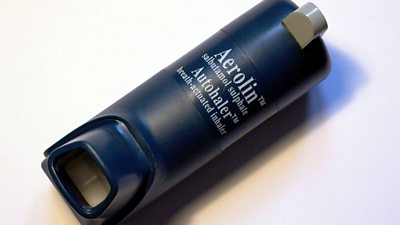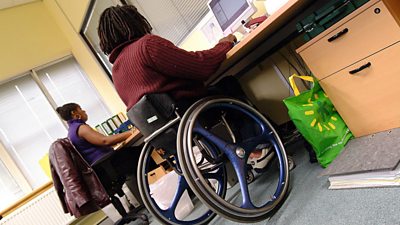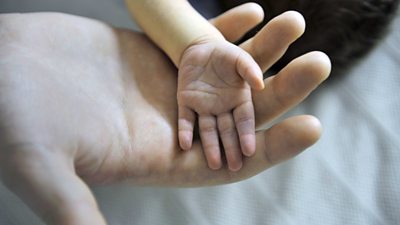What Can Go Wrong?
- Injuries caused by manual handling (particularly to the back, shoulders and neck) are a significant contributor to sickness absence statistics. Those most at risk of injury are those who aren't used to the physical nature of the activity required and/or those who haven't been trained to lift correctly.
Legal/BBC Requirements
The UK's manual handling regulations state that employers should adopt a hierarchy of control measures for managing manual handling work so as to:
- avoid hazardous manual handling operations where it is practicable to do so
- risk assess any hazardous manual handling operations that cannot be avoided
- take measures to reduce the risk of injury.
Control Measures
General Controls
1. Take every opportunity to AVOID manual handling wherever possible.
2. Where avoidance isn’t possible try to MINIMISE lifting and carrying e.g. parking close to the location, using a trolley or a rucksack, sharing the load with a second person, minimising what is carried to essentials, using lifts not stairs etc.
3. When manual handling can’t be avoided, ASSESS the risk. A useful mnemonic to consider when completing this risk assessment is TILE - Task, Individual, Load, Environment. There’s a manual handling inspection checklist on myRisks Tools that can help you with this.
4. Put in place strategies to REDUCE the risk, such as:-
- Use a suitable manual handling aid e.g. wheeled cases, backpack etc.
- Get help from colleagues and share or book porters etc.
- Use safe lifting techniques e.g. plan where it is going, get close to the load, bend the knees, keep the back straight, and avoid over-stretching and twisting the back when carrying or placing the load.
- Wear suitable footwear with non-slip soles.
- When storing items, keep heavy or frequently used items at a manageable height.
Vehicles
- When using/hiring a vehicle, make sure you select one with good access to the boot / loading edges so you can slide items in rather than reaching over a lip.
- Park as close to drop off point as possible or consider dropping off kit before parking.
- Load the vehicle so you don’t have to stretch to reach items.
- When unloading slide items towards you before attempting to lift them, again, avoid twisting the spine while lifting.
Camera Operations
- Try to keep the camera close to your body and avoid stretching your arms out.
- Kneel or spread legs to lower the shot height, don’t bend your back. Consider cradling the camera at waist height when shooting seated people or children.
- When standing still take the strain off your lower back by resting one foot on a slightly higher level such as a box, bag or step.
- Rest the camera on a mounting whenever possible. If a tripod is not available use a wall, chair, table or window ledge to support the camera, or consider using a monopod as a mobile alternative.
For Managers
- As a Manager (or Producer if on a Production), you are responsible for ensuring that Risk Assessments are carried out to identify manual handling activities with a risk of injury, although you can delegate this task to a nominated competent person.
- Ensure all staff that perform a significant amount of manual handling attend the Manual Handling Awareness Workshop.
- A discussion will need to be had with any pregnant lady before commencing manual handling –seek further advice from the pregnancy section or BBC Safety.
- If staff are reporting work related issues or injuries, you can refer them to Occupational Health for assessment and advice on their health at work or any necessary adjustments. This may include physiotherapy treatment where a short course (5 sessions) is likely to resolve the problem.
- If you injure yourself while lifting and handling then you should seek advice and treatment from your own doctor, NHS walk in centre or accident and emergency department.
Division Specific Issues
- Incorporating Radio OB MS M011-09 Manual handling.
FAQs/Did You Know?
- The HSE publish a guide called 'Manual Handling at Work: A brief guide' that provides some additional information about Manual Handling and the related Risk Assessment.
Useful documents
Recommended links
-
Occupational Health Referrals [Gateway]
Workplace Health topics
-

Audiences and Visitors to the BBC
Guide to safeguarding those visiting our premises or attending our events / shows. -

Display Screen Equipment (DSE)
Includes advice on completing assessments for various types of workstation and how to address any health issues. -

First Aid in BBC Premises
This page also provides the arrangements and numbers for contacting ambulances and the National Central Control Room (NCCR). -

Legionella in Premises: Control of
This guidance provides an overview of how water systems are managed in premises to minimise the risks from the Legionella bacteria. -

Manual Handling
If your job involves lifting or carrying heavy or awkwardly-shaped equipment, or repetitive lifting, you need to know how to minimise the risk of injury. -

Noise at Work
Controlling the exposure to noise at work which can be harmful to one's hearing. -

Occupational Asthma
A guide to situations in which asthma could be caused by inhaling certain substances in the course of your work. -

Office Safety
This guide provides general advice for working in both BBC offices and third party (non BBC) offices. -

Personal Emergency Evacuation Plan (PEEP)
Guideline describing the measures to take to ensure those who need it can get assistance to evacuate a premises during a fire or other emergency. -

Shift Working and Night Shifts
The risks of shift working and how to minimise the effects of night shift working by taking care of your health and environment. -

Skincare and Dermatitis
A guide to looking after your skin and recognising the symptoms of dermatitis which is a reaction that occurs when our skin becomes inflamed.
More from SSR
-
Safety Hub
Your platform to record accidents, risk assessments, assurance monitoring and inspections -
Safety Equipment Stores
Just one number to call: 020 3614 5155 -
BBC Safety Guidelines
An A-Z of BBC's Health and Safety Guidelines -
Safety Advisor Contact List
Safety Advice Line: 0370 411 0464 Email: safety@bbc.co.uk
- A-Z of BBC Safety Guidelines
- Find my Safety Adviser (BBC Network only)
- Accident Reporting and Investigation
- BBC Health & Safety Policy
- Contractors (incl. vetted lists)
- Contributors
- Fire Safety
- Freelancers
- Independent Production Companies
- Risk Assessment
- Safety Alerts
- Safety Responsibilities
- Safety Training
- Sets & Premises Safety Guide
Events guidance - key links:
- Exhibitions
- General Guidance
- Indoor Location Recce Checklist
- Outdoor Location Recce Checklist
- Major Incidents & Emergency Planning
- Marketing and Promotional
- Noise Exposure
- Planning and Management
- Responsibilities
- Responsibilities Form
- Laser Lighting Effects
- Strobe Lighting
- Temporary Stages and Rostra
Health topics - key links:
- Access Services (BBC network only)
- Contributors Fitness to Participate
- Display Screen Equipment (DSE)
- Employee Assistance Programme (BBC network only)
- First Aid and Welfare on Location
- International Travel - Risks & Health
- Manual Handling
- Mental Health: Homepage
- Occupational Health Referrals & Advice (BBC network only)
- Personal Health and Wellbeing
- Pregnancy
- Psychological Trauma Support & Trauma Risk Management (TRiM)
- Tiredness and Fatigue
- Travel Health Contacts
BBC High Risk - key links:
BBC Journalism - key links:
BBC Productions - key links:
- Aerial Filming and Airfields
- Animals: Displaying and handling for performance
- Boats: Working on
- Children and Young People
- Driving
- Electrical Equipment and Systems
- First Aid and Welfare on Location
- Food Safety (Cooking and Catering)
- Remote Location Working
- Roads and Streets: Working by
- Security of Productions on Location
- Stunts
- Tiredness and Fatigue
- Unmanned Aerial Systems (UAS aka Drones)
- Vehicles: Recording in, from and around
- Working at Height: Mobile Elevating Work Platforms
- Working at Height: Tower Scaffolds
BBC Radio - key links:
- Corporate Security Home (BBC Network only)
BBC Security - key links:
BBC Sport - key links:
- Broadcast: Presentation and Linking Positions
- Broadcast Vehicles
- Buildings used for ...temporary studios (HSE)
- Electrical Equipment and Systems
- Guide to Safety at Sports Grounds (DCMS)
- Managing H&S at Motorsport Events (HSE)
- Safety in Broadcasting Sports Events (HSE)
- Sports Events: Recording or Filming
- Vehicles used in Sports Coverage
About this site
This site describes what the BBC does in relation to managing its health, safety and security risks and is intended for those who work directly for the BBC.
It is not intended to provide instruction or guidance on how third parties should manage their risks. The BBC cannot be held liable for how this information is interpreted or used by third parties, nor provide any assurance that adopting it would provide any measure of legal compliance. More information
Some links on this site are only accessible when connected to the BBC network











